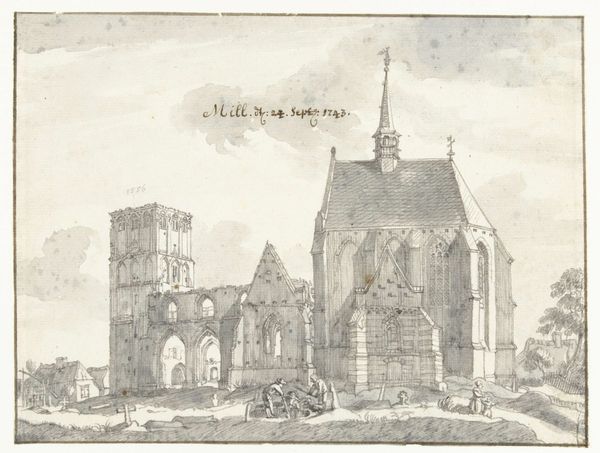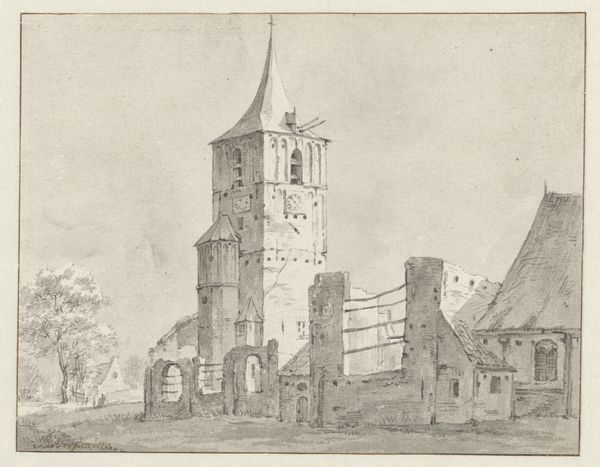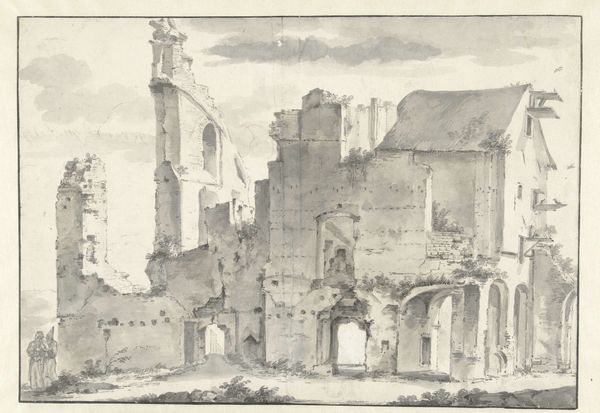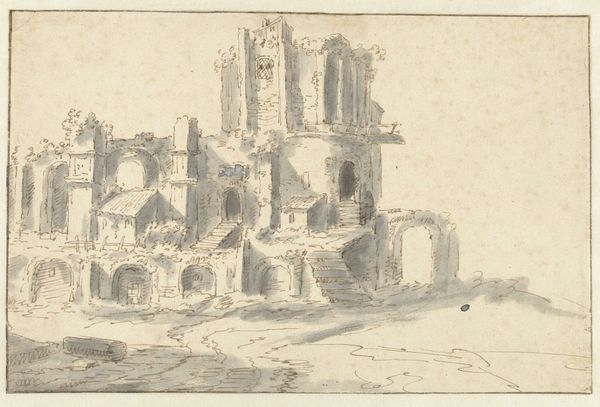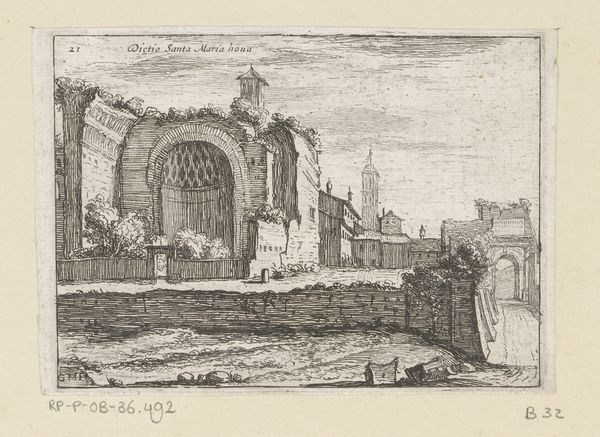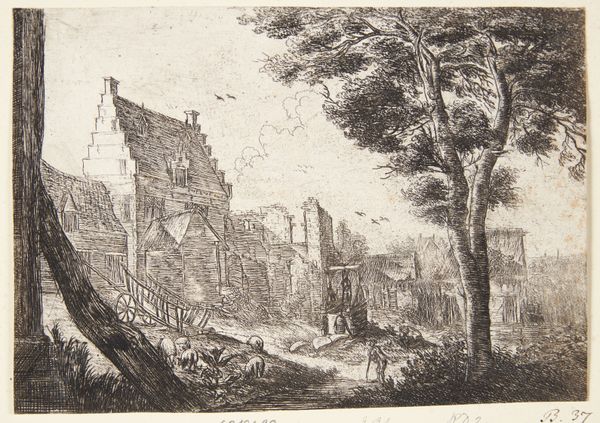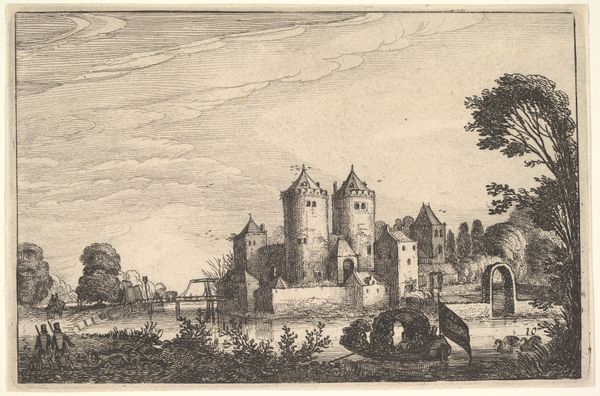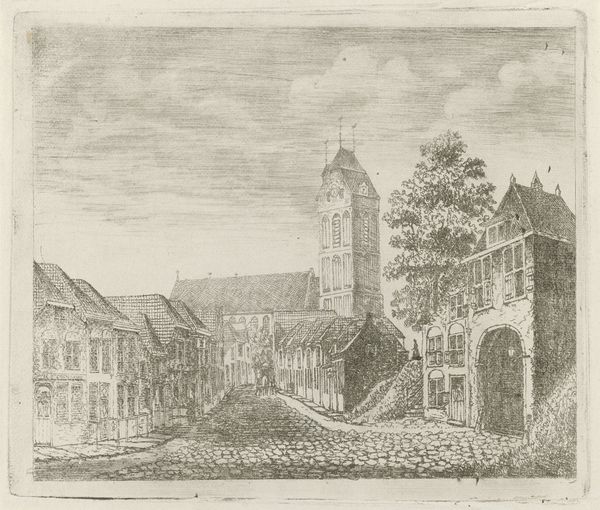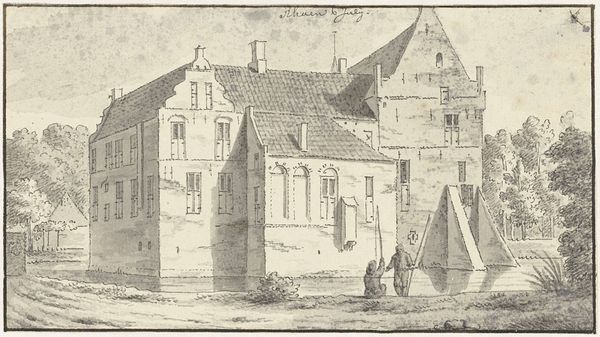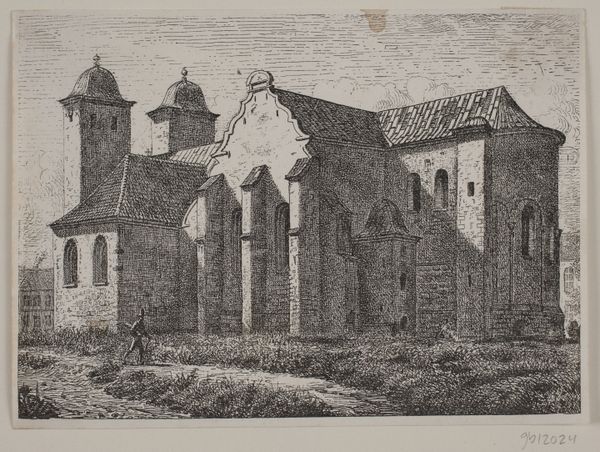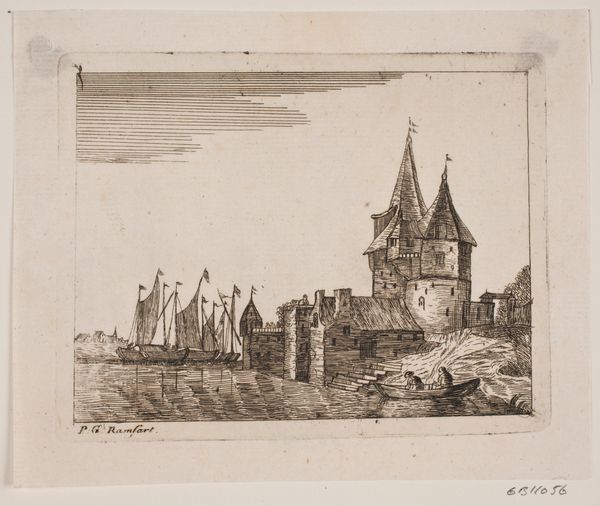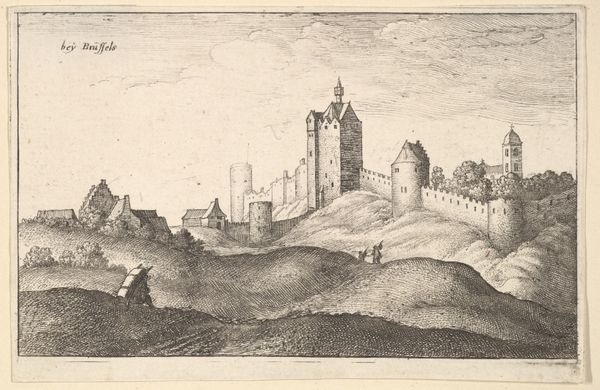
drawing, carving, paper, ink
#
drawing
#
carving
#
baroque
#
pencil sketch
#
old engraving style
#
landscape
#
paper
#
ink
#
pen-ink sketch
#
cityscape
Dimensions: height 194 mm, width 238 mm
Copyright: Rijks Museum: Open Domain
Curator: Valentijn Klotz’s, The Ruin of the Grote Kerk at Grave, created around 1675, offers us a glimpse into a scene of devastation rendered meticulously in ink on paper. Editor: The overall impression is stark, almost melancholic. The monochrome palette heightens the sense of ruin, that sense of dramatic desolation in the aftermath of a disaster. Curator: Indeed. Note the baroque influence in the dramatic composition. The skeletal remains of the church dominate the background, exhibiting an elaborate structure even in its state of decay. The artist is attentive to capturing how light reflects on remaining forms. Editor: It’s tempting to consider what kind of labor and resources were required for construction, contrasted with how quickly the building was taken apart. Was this building demolished or destroyed by war? I also wonder, considering that it’s ink on paper, what Klotz may have experienced in producing it, how many strokes the artist applied on each area in the image. Curator: These are key observations. We should consider the historical context. The cityscape presents not just architectural forms, but also tangible social and political implications. Klotz may be addressing the ravages of conflict through careful arrangement of graphic forms. Note how Klotz is intentional about organizing line weights to evoke the depth of the scene. Editor: Absolutely, the materiality adds another layer to this reading, emphasizing the vulnerability of cultural institutions. In our own time, such images invite a critical approach. Curator: Agreed. By attending to Klotz's calculated composition and technical skill, we might have a greater appreciation for both the artwork and its implications. Editor: Ultimately, examining the means and historical context allows us to remember not only the destroyed Grote Kerk, but also the cost of that ruin, both materially and to the community that suffered its loss.
Comments
No comments
Be the first to comment and join the conversation on the ultimate creative platform.
